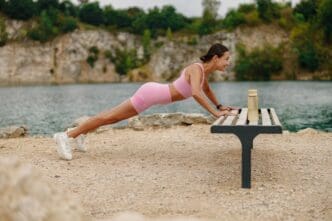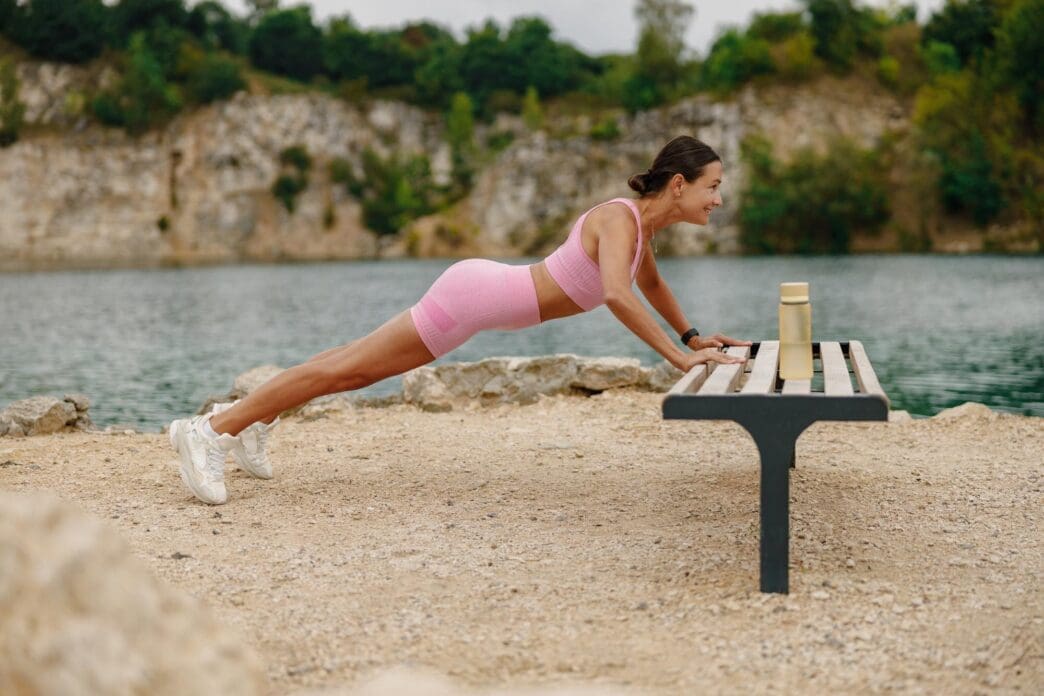A Quick Takeaway
The Story Behind the Trend
How to Make It Work for You
The Community View
Staying fit while traveling, whether for business or leisure, is entirely achievable even without access to a traditional gym. This guide is designed for anyone looking to maintain their exercise routine, boost energy, and manage stress on the go, demonstrating how to leverage hotel rooms, outdoor spaces, and minimal equipment to sustain a healthy lifestyle no matter where your journey takes you. By understanding the principles of bodyweight training, strategic planning, and embracing your surroundings, you can easily integrate effective workouts into your travel schedule, ensuring your fitness goals remain on track.
The Imperative of Staying Active While Traveling
Travel often presents a unique set of challenges to maintaining a consistent fitness routine. Long hours of sitting, disrupted sleep, new environments, and tempting culinary delights can quickly derail progress. However, prioritizing physical activity while traveling is crucial for both physical and mental well-being.
Regular movement helps counteract the fatigue associated with travel, improves circulation, and can even mitigate jet lag. It also provides a valuable outlet for stress and helps maintain the mental clarity needed for productive business trips or enjoyable vacations. Furthermore, staying active prevents the loss of fitness gains, making it easier to resume your regular routine upon returning home.
Strategic Planning: Your Pre-Trip Fitness Checklist
Success in travel fitness begins before you even leave home. A little foresight can make a significant difference in your ability to stay active.
Research Your Destination
Before packing, take a moment to research your accommodations and the surrounding area. Does your hotel offer a pool, even if it lacks a full gym? Are there local parks, walking trails, or scenic routes nearby that are safe for a run or brisk walk? Knowing your options ahead of time eliminates guesswork and makes it easier to schedule activities.
Pack Smart: Essential Gear
You do not need much equipment to get a great workout, but a few key items can significantly enhance your options. Pack comfortable workout clothes and supportive athletic shoes. Consider bringing a resistance band set, which is incredibly lightweight and versatile for strength training. A jump rope is another excellent, compact tool for high-intensity cardio. A small, inflatable exercise ball can also add variety to core work.
Cultivate a Flexible Mindset
Understand that your travel workouts might look different from your home routine, and that is perfectly fine. Be open to new forms of exercise and adjust your expectations. The goal is consistent movement, not necessarily replicating every aspect of your usual gym session. Embrace the opportunity to explore and be creative with your workouts.
Bodyweight Workouts: Your Ultimate Travel Companion
Bodyweight exercises are the cornerstone of travel fitness because they require no equipment, can be performed almost anywhere, and are highly effective for building strength, endurance, and flexibility. They are perfect for small hotel rooms, airport lounges, or outdoor spaces.
Fundamental Bodyweight Exercises
A comprehensive bodyweight routine can target every major muscle group. Start with compound movements that engage multiple muscles simultaneously. These include squats, lunges (forward, reverse, lateral), push-ups (with variations like knee push-ups or incline push-ups using a desk or bed), and planks (forearm, high, side).
For the core, incorporate exercises like mountain climbers, Russian twists, and bicycle crunches. For the posterior chain, consider glute bridges and supermans. Triceps dips can be performed using a sturdy chair or the edge of a bed. Burpees are a fantastic full-body, high-intensity option that elevates your heart rate quickly.
Structuring Your Bodyweight Routine
You can structure your bodyweight workouts in various ways. Circuit training is highly effective: perform 10-15 repetitions of 4-6 different exercises back-to-back, with minimal rest between exercises. Complete 3-5 rounds of the circuit. High-Intensity Interval Training (HIIT) can also be done with bodyweight, alternating short bursts of intense effort (e.g., jump squats, burpees) with brief recovery periods.
Leveraging Resistance Bands and Portable Equipment
If you have packed resistance bands or a jump rope, you have significantly expanded your workout possibilities. These tools are lightweight, take up minimal space, and offer incredible versatility.
Resistance Band Workouts
Resistance bands can add intensity to traditional bodyweight movements or allow for exercises that mimic weighted gym movements. Loop a band around your thighs for added resistance during squats and glute bridges. Use longer bands for exercises like standing rows, bicep curls, triceps extensions, and overhead presses. They are excellent for both strength training and activation exercises before a run.
Jump Rope for Cardiovascular Fitness
A jump rope is a phenomenal cardio tool that can be used almost anywhere with a bit of vertical clearance. Ten minutes of jumping rope can be as effective as 30 minutes of jogging. It improves coordination, agility, and cardiovascular health. Integrate short bursts of jumping rope into your bodyweight circuits for an added cardio boost.
Embracing the Outdoors and Local Environment
Your travel destination itself can be your gym. Exploring your surroundings on foot or by bike is an excellent way to combine sightseeing with fitness.
Walk, Run, or Hike
Instead of taking a taxi or public transport, walk to your destination whenever possible. Schedule dedicated walks or runs to explore new neighborhoods, parks, or scenic routes. If you are in a nature-rich area, seek out hiking trails. This not only provides a great workout but also offers a unique way to experience the local culture and scenery.
Stairs and Public Spaces
If your hotel has multiple floors, opt for the stairs instead of the elevator. Stair climbing is a powerful cardiovascular and leg-strengthening exercise. Public parks often have benches that can be used for step-ups, box jumps (if safe), or incline push-ups. Look for open spaces where you can perform sprints or dynamic stretches.
Water Activities
If your hotel has a pool, or if you are near a beach or lake, take advantage of swimming. Swimming is a full-body workout that is low-impact and incredibly refreshing. Many destinations also offer opportunities for kayaking, paddleboarding, or surfing, which are fantastic ways to engage your core and upper body while enjoying the water.
Quick Workouts for Busy Schedules
Even on the busiest travel days, you can squeeze in effective movement. The key is to be opportunistic and efficient.
Micro-Workouts
Break up your exercise into smaller, more manageable chunks throughout the day. A 10-minute bodyweight circuit in the morning, a brisk walk during a lunch break, and another 10-minute session before dinner can add up to a significant amount of activity. These micro-workouts keep your metabolism active and prevent stiffness.
Airport Fitness
Airports can be surprisingly good places to get some steps in. Instead of sitting at your gate, walk laps around the terminal. Carry-on luggage can even be used for some careful, low-impact lifts or squats (be mindful of others!). Stretching in a quiet corner can also relieve tension from long flights.
The Mind-Body Connection and Recovery
Fitness is not just about physical exertion; it also encompasses mental well-being and proper recovery, especially when traveling.
Stretching and Mobility
Incorporate daily stretching or a short yoga flow into your routine to improve flexibility, reduce muscle soreness, and relieve tension. Many excellent yoga or stretching apps and online videos require no equipment and can be done in a small space. This is particularly important after long periods of sitting during travel.
Hydration and Nutrition
Staying well-hydrated is paramount when traveling, as dehydration can exacerbate fatigue and hinder performance. Drink plenty of water throughout the day. While it is tempting to indulge in every local delicacy, try to balance treats with nutritious meals, focusing on lean proteins, fruits, and vegetables to fuel your body effectively.
Sustaining Your Fitness Journey on the Road
Maintaining fitness while traveling is not about perfection, but about consistency and adaptability. By planning ahead, embracing bodyweight exercises, leveraging portable equipment, and utilizing your surroundings, you can successfully integrate movement into any travel itinerary. View these opportunities not as a chore, but as an exciting way to explore new places and enhance your overall travel experience, ensuring you return home feeling refreshed, energized, and proud of your continued commitment to health.







